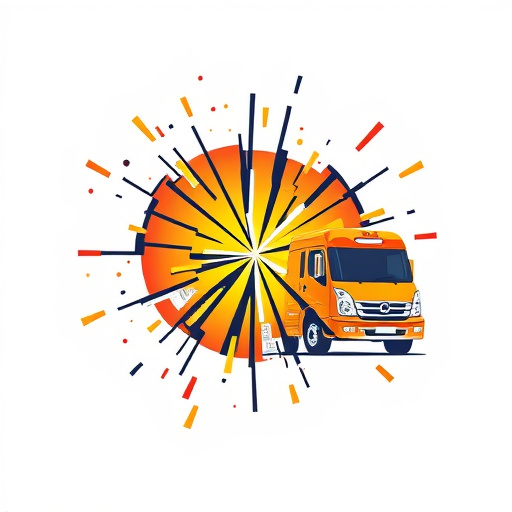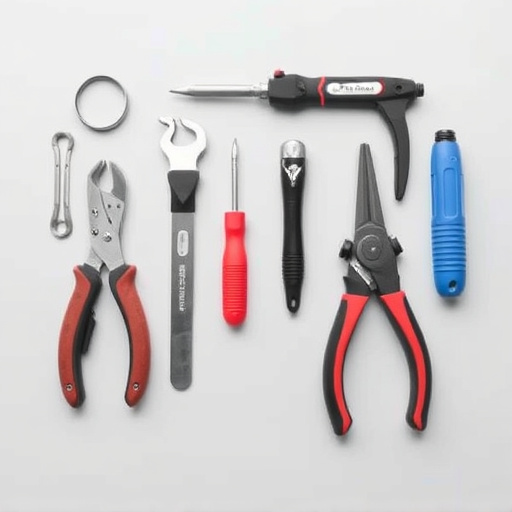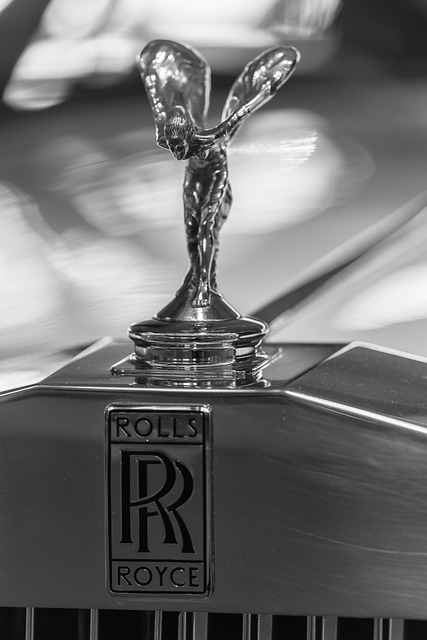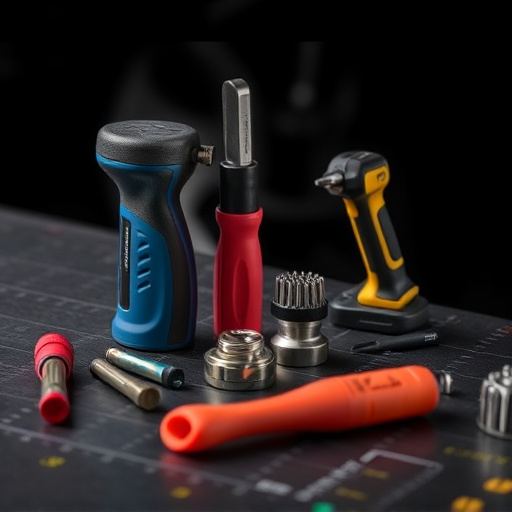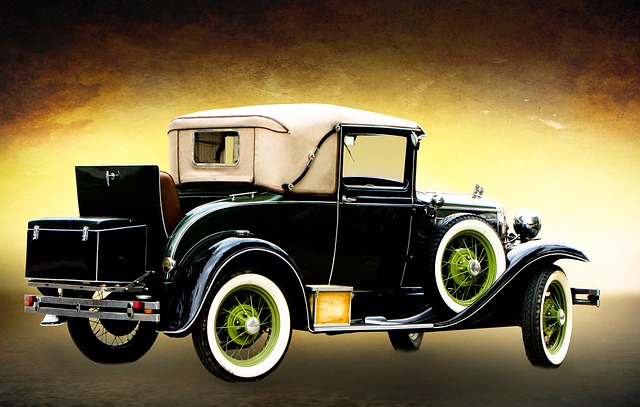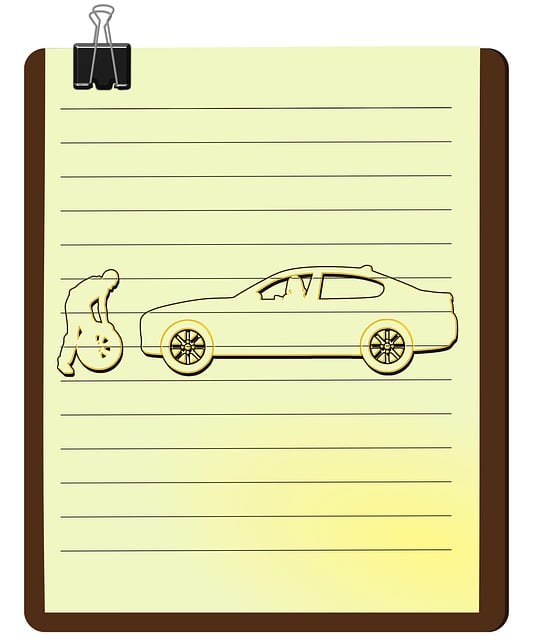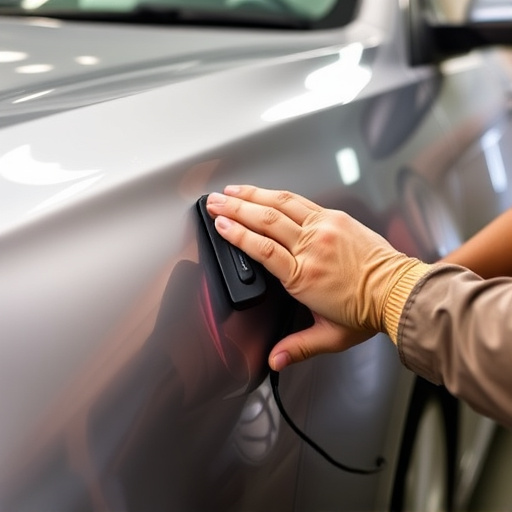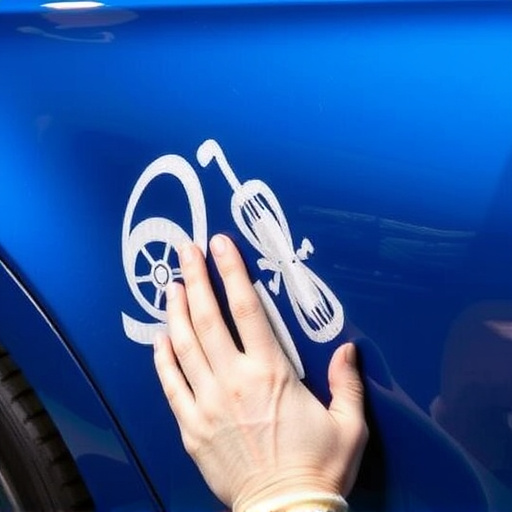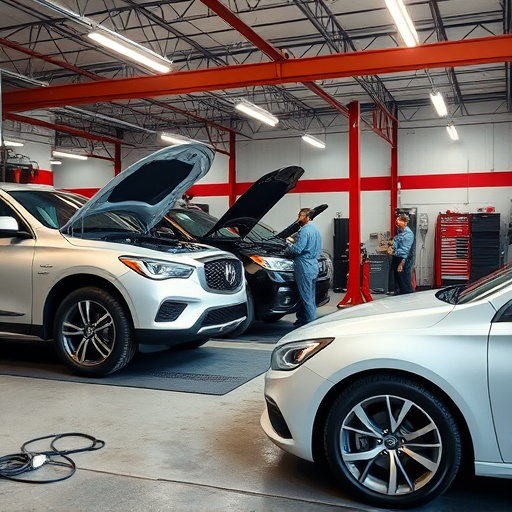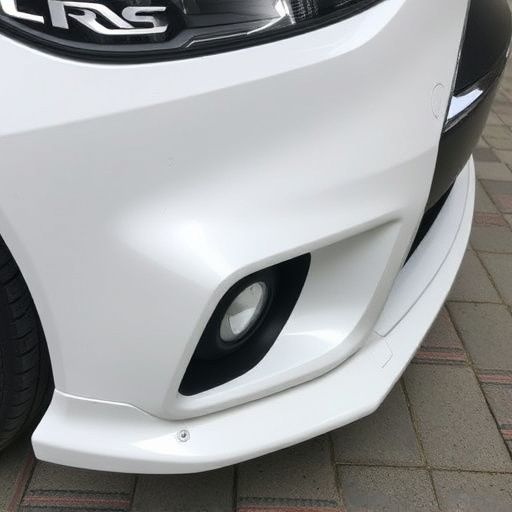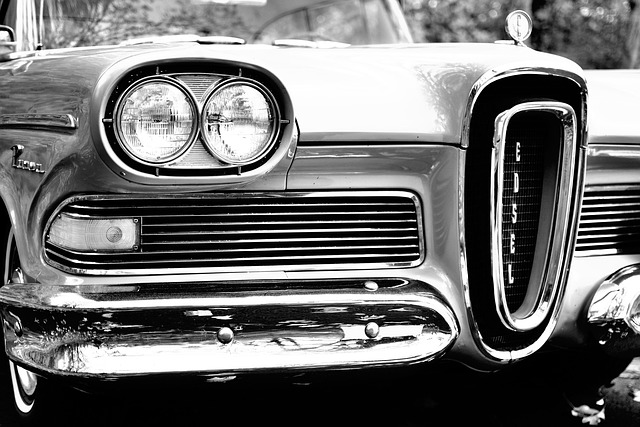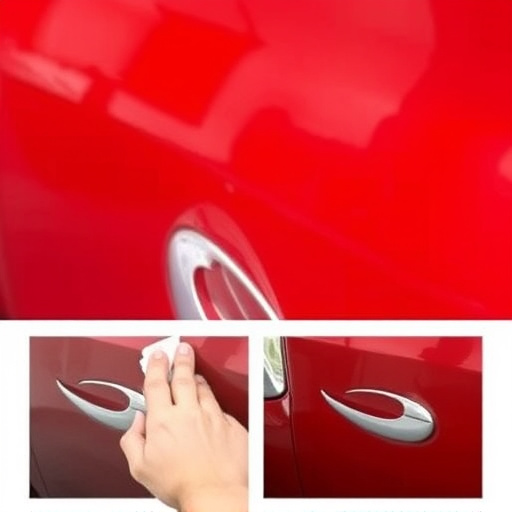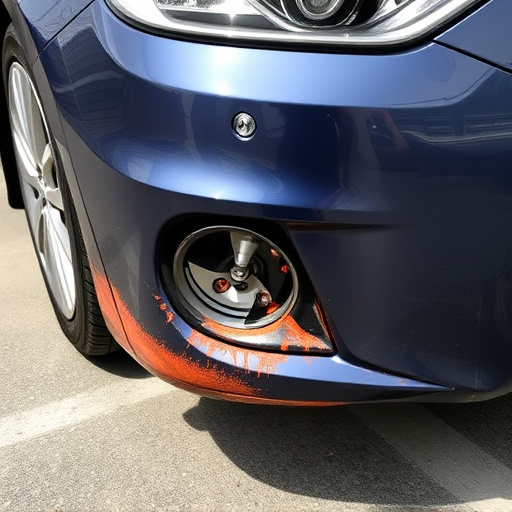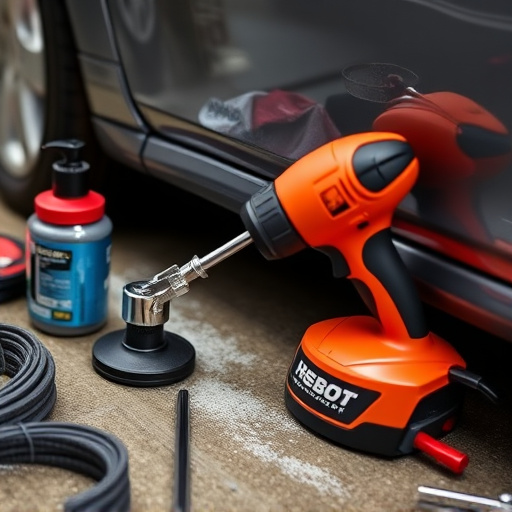UV paint curing systems revolutionize automotive collision repair by significantly reducing painting times through UV light-initiated chemical reactions, offering speed advantages over traditional methods. However, these systems pose risks of skin irritation, eye strain, and potential vision damage, necessitating strict safety protocols for technicians. Best practices include wearing protective gear, maintaining proper ventilation, ensuring surface cleanliness, calibrating equipment, and training on safe handling procedures to ensure efficient, safe, and high-quality car restoration using UV paint curing systems.
In today’s advanced manufacturing landscape, UV paint curing systems offer unparalleled efficiency. However, these powerful tools pose unique risks to technicians due to intense ultraviolet radiation. Understanding both the benefits and potential hazards is crucial for safe and effective operations. This article delves into essential safety protocols and best practices for technicians working with UV paint curing systems, ensuring optimal results while mitigating risks. By following these guidelines, professionals can navigate the process securely.
- Understanding UV Paint Curing Systems: Risks and Benefits
- Safety Protocols for Technicians Working with UV Paint
- Best Practices for Ensuring Safe and Efficient Curing Processes
Understanding UV Paint Curing Systems: Risks and Benefits
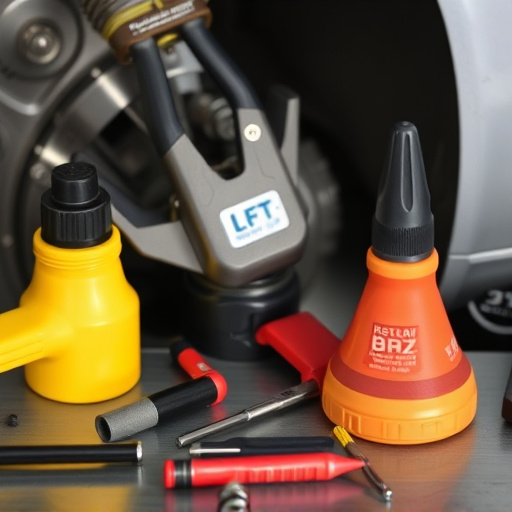
UV paint curing systems offer a modern approach to drying and hardening paints, resins, and coatings in automotive collision repair and vehicle repair services. This innovative technology uses ultraviolet light to initiate a chemical reaction, leading to faster curing times compared to traditional methods. The primary benefit is speed; UV systems can significantly reduce the time needed for painting and finishing processes, streamlining operations at auto repair shops.
However, while these systems offer numerous advantages, they also pose specific risks. Exposure to UV light can cause skin irritation or damage, especially during prolonged contact. Proper protective gear, including gloves, safety glasses, and shields, is essential when operating these systems. Additionally, the intense light may contribute to eye strain or potential vision damage, further emphasizing the need for adequate eye protection. Understanding both the risks and benefits of UV paint curing systems is crucial for technicians working in automotive collision repair to ensure a safe and efficient workspace.
Safety Protocols for Technicians Working with UV Paint
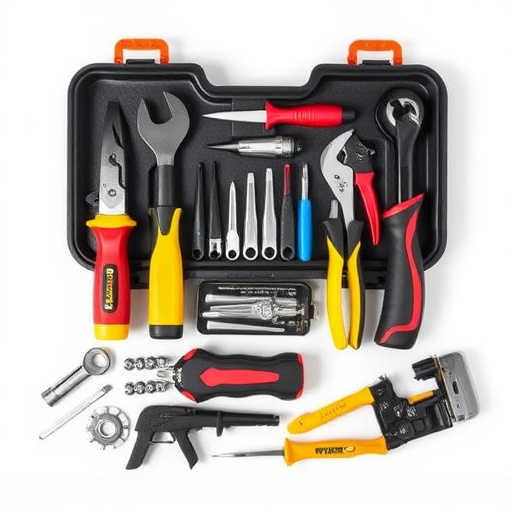
Working with UV paint curing systems requires stringent safety protocols to protect technicians from potential hazards. These advanced painting technologies offer efficient and innovative solutions for processes like fender repair and paintless dent repair, but they also come with unique risks.
Technicians must wear appropriate personal protective equipment (PPE), including goggles, gloves, and long-sleeved clothing, to shield against UV radiation and the chemical components of the paint. Ventilation is paramount; working in a well-ventilated area or using a fume extractor is essential to prevent inhalation of volatile organic compounds (VOCs). Additionally, technicians should be trained in proper handling and disposal procedures for the UV paint curing system and associated materials, ensuring adherence to environmental safety standards. Regular equipment maintenance and calibration ensure optimal performance while minimizing potential risks.
Best Practices for Ensuring Safe and Efficient Curing Processes
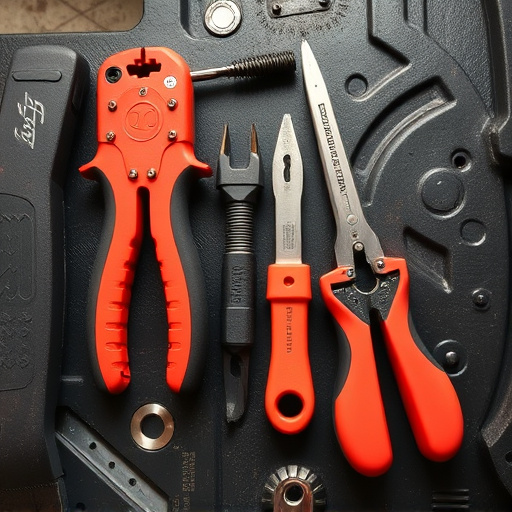
To ensure safe and efficient UV paint curing processes, technicians must adhere to best practices. This includes maintaining proper ventilation in the work area to control exposure to potentially harmful UV radiation. Protective eyewear and gloves should be worn at all times to shield against direct contact with curing lights and the chemical components of the paint. Additionally, ensuring the surface to be cured is clean, dry, and free from any contaminants will optimize the adhesion and quality of the final finish, whether for vehicle repair services, fleet repair services, or car restoration projects.
Regular calibration and maintenance of UV curing systems are crucial. Using the correct intensity settings for the specific paint type and application can prevent overshooting cure times, reducing the risk of paint imperfections. Proper training on equipment operation and safety protocols is paramount, ensuring that all technicians involved understand potential risks and how to mitigate them effectively. This commitment to safe practices not only protects the health and well-being of the workforce but also guarantees high-quality outcomes for every car restoration project.
UV paint curing systems offer efficient and precise drying, but technicians must prioritize safety. By understanding the risks and implementing best practices, including proper protective equipment and controlled environment management, professionals can ensure safe and effective curing processes. Remember that adhering to safety protocols is paramount for minimizing UV paint system risks and maximizing their benefits.
